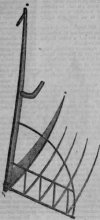- Joined
- Aug 28, 2010
- Messages
- 5,431
Here's one guy who decided to make a difference by taking 30 scythe blades and related equipment to rural Nepal, to demonstrate their usefulness and enable the local blacksmiths to replicate the blades. "The local production of blades would be an important part of this initiative, rather than relying on continual imports... The skilled blacksmiths are of course also farmers and can be part of the harvesting trials as well..."
http://scytheworks.ca/SPIN.html
The linked page also has a bunch of photos from rural Nepal, like this one:

http://scytheworks.ca/SPIN.html
The linked page also has a bunch of photos from rural Nepal, like this one:




